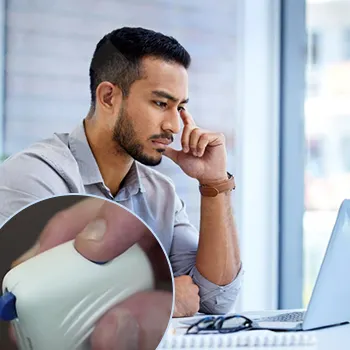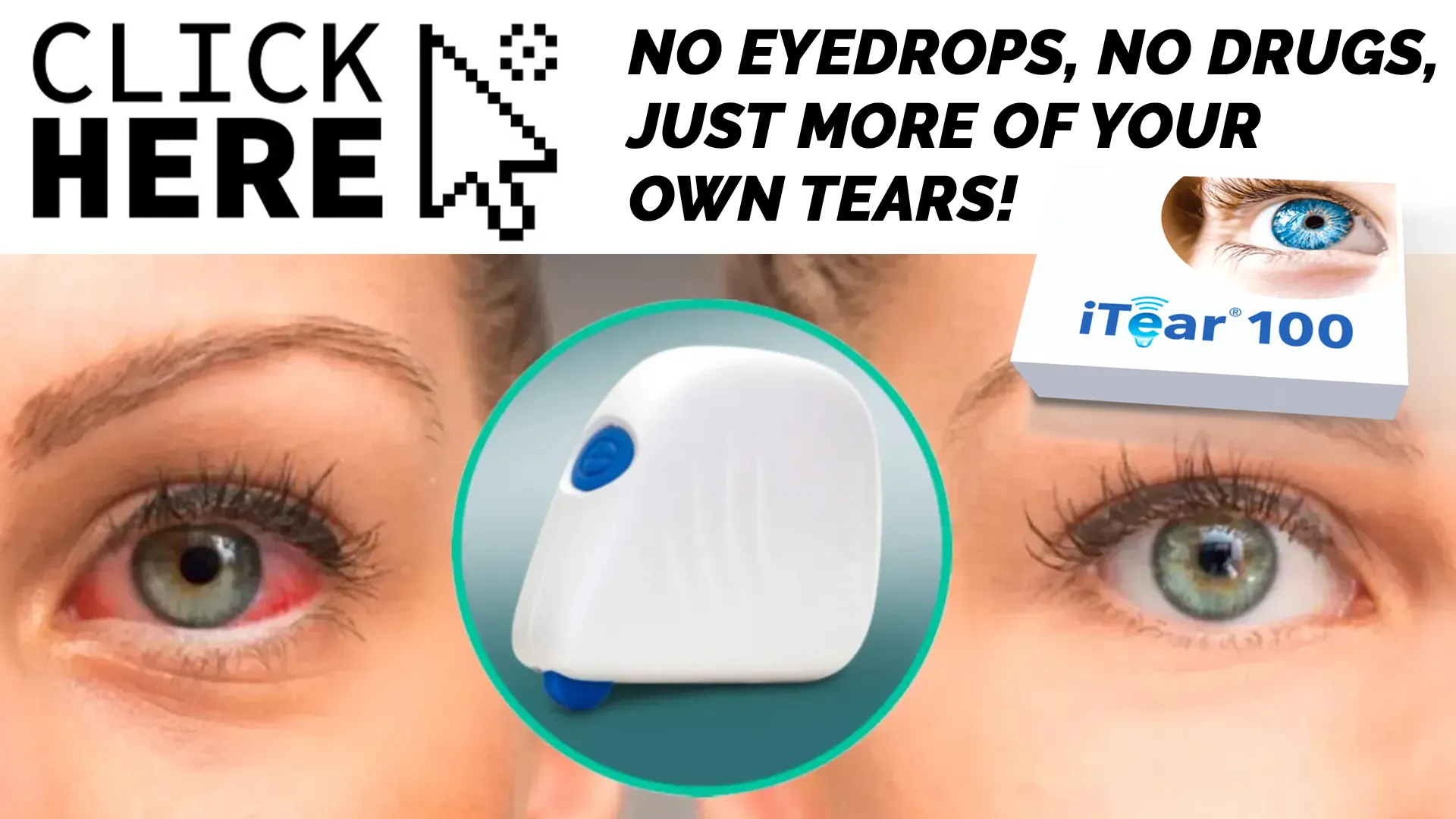Eat Right: Foods for Dry Eye Relief and Prevention
Table of Contents []
- Foods for Dry Eye
- Discover the Power of Nutrition in Managing Dry Eye with Olympic Ophthalmics
- Nourishing Your Eyes: The Best Foods to Combat Dry Eye
- Eating Your Way to Comfortable Eyes with Olympic Ophthalmics
- Fueling Your Tear Production with Wholesome Foods
- The Significance of Diet in Your Dry Eye Treatment Plan
- The Connection Between Omega-3s and Healthy Eyes
- Simple Dietary Changes for Significant Eye Relief
- Building Blocks of a Dry Eye-Friendly Diet
- Expert Tips for a Diet That Supports Your Dry Eyes
Foods for Dry Eye
Discover the Power of Nutrition in Managing Dry Eye with Olympic Ophthalmics

The Importance of a Balanced Diet for Eye Health
Eating the right foods can make a world of difference when it comes to maintaining eye health. Nutrients like omega-3 fatty acids, vitamins A, C, and E, and zinc are crucial in keeping your eyes lubricated and functioning fully. By incorporating these nutrients into your diet, you can support your body's natural ability to produce tears and defend against the irritation of dry eyes.
A balanced diet isn't just about single nutrients; it's about synergy. Varieties of fruits, vegetables, whole grains, and lean proteins work together to maintain your overall health, which ultimately impacts your eye health as well.
Top Foods to Alleviate Symptoms of Dry Eye
Foods high in omega-3 fatty acids, such as salmon, flaxseeds, and walnuts, are known to support eye moisture. Meanwhile, leafy greens like spinach and kale bring a host of antioxidants to the table vital in protecting eye cells from damage.
Oranges, strawberries, and bell peppers are generous with vitamin C, which can also help with tear production. Don't forget about nuts and seeds; these small but mighty bites of nutrition pack a punch with vitamin E, combating inflammation.
Easy Dietary Adjustments for Immediate Impact
Making small changes, like adding a serving of fatty fish to your weekly routine or swapping your afternoon snack for a handful of almonds, can start you on the path to better eye health. It's all about creating sustainable, healthy habits that support your eyes.
Addition by subtraction works too-cut down on caffeine and alcohol, known desiccants, to preserve your body's moisture. And always remember to stay hydrated; water plays a crucial role in maintaining tear film.
Remember, a healthy diet is a powerful tool in our arsenal against dry eye syndrome. However, when you need an extra boost, the iTEAR100 device is here to assist. Reach out to us at 650-300-9340 for more information or to place a new order.Nourishing Your Eyes: The Best Foods to Combat Dry Eye

Fish That Make a Splash in Eye Care
Cold-water fish like salmon, mackerel, and sardines are heavy hitters when it comes to omega-3 fatty acids. These nutrients are champions of moisture retention in the eyes and can help soothe inflammation that often comes with dry eye syndrome.
Eating these types of fish a couple of times a week isn't just good for your eyes-it supports heart and brain health too! Think of it as a triple win for your well-being.
Seeds and Nuts: The Snack That Gives Back
Not a fish fan? No problem. Seeds and nuts are alternative omega-3 powerhouses. Plus, they're easy to integrate into your diet. Sprinkle some chia or flaxseeds into your morning yogurt or reach for a few almonds during your day-it's that simple to show your eyes some love.
The vitamin E found in these snacks is also essential for protecting eye cells from the wear and tear of everyday life. Keep a stash at your desk or in your bag for a quick, eye-boosting treat!
Colorful Fruits and Veggies: A Feast for Your Eyes
Richly colored fruits and vegetables are loaded with vitamins and antioxidants that are crucial for eye health. Beta-carotene, lutein, and zeaxanthin in particular play protective roles for your peepers.
Munch on vibrant carrots, sweet potatoes, and pumpkins to get your fill of these nutrients. Plus, they'll brighten up your plate and add some joy to meal times!
We understand that an eye care routine can be easily overlooked in your busy day-to-day life. Let us help you simplify the process. Get the support you need by reaching out to us at 650-300-9340 , and believe in a solution that goes beyond just treatment-believe in a lifestyle that embraces all aspects of health, including nutrition.Eating Your Way to Comfortable Eyes with Olympic Ophthalmics

Hydration: The Unsung Hero in Eye Health
We often hear that we should drink eight glasses of water a day, but do we really understand why? Beyond nourishing our cells, proper hydration is crucial for maintaining healthy tear film over our eyes, preventing them from becoming dry and uncomfortable.
Carrying a water bottle and taking sips throughout the day is a simple step you can take to ensure your eyes stay hydrated. Consider it your mobile oasis-refreshing not just for your body, but for your eyes too.
Herbal Teas: A Cozy Path to Moisture
If water isn't your cup of tea, perhaps actual tea can tempt you. Opting for non-caffeinated herbal teas, such as chamomile or rooibos, can have hydrating effects without drying caffeine. It's a warm, soothing way to contribute to your eye health ritual.
These teas offer antioxidants as well, which serve as an added bonus in the fight against oxidative stress, potentially harmful to eye tissues.
Limiting Dehydrating Substances for Optimal Eye Moisture
It's not always about what you add to your diet, but also what you might need to reduce. Beverages like coffee and alcoholic drinks can have a diuretic effect, leading to increased dry eye symptoms.
By reducing your intake of these, you create a more hydrating environment for your eyes. Moderation can make a significant impact, so consider alternate beverages that are kind on the eyes.
When it comes to ensuring your eyes receive the best care possible, don't just think outside the box-think outside the bottle. The iTEAR100 device is a testament to how technological innovation can change lives. Contact us now at 650-300-9340 for more information or to start your order, and pair your iTEAR100 experience with the power of proper nutrition for the best in holistic eye care.Stop Your Dry Eye Now.

You're here because you have eye irritation or dryness, right? Well, you can stop having that problem. The iTear100 stops your dry eye in just seconds per use, AND you'll need it less as you use it! Click the image above - get relief now, and finally be free of dry eye issues for good!
Stop Your Dry Eye Now.

You're here because you have eye irritation or dryness, right? Well, you can stop having that problem. The iTear100 stops your dry eye in just seconds per use, AND you'll need it less as you use it! Click the image above - get relief now, and finally be free of dry eye issues for good!
Fueling Your Tear Production with Wholesome Foods

The Skinny on Fats: Omega-3s to the Rescue
While we often try to reduce fats in our diet for various reasons, it's important to remember that not all fats are created equal. Omega-3 fatty acids, specifically, are the good guys when it comes to combating dry eye syndrome.
They work by helping to maintain the oily layer of the tear film, which prevents the evaporation of tears-a common culprit in dry eye scenarios.
Vitamins A, C, and E: An Antioxidant Power Trio
Vitamin A is a well-known ally for eye health, often celebrated for its role in vision support. But it doesn't work alone. Vitamins C and E form a powerful antioxidant trio with vitamin A, protecting eye tissues and supporting the vascular structures of the eyes.
Look for these nutrients in colorful produce, fortified cereals, and even lean cuts of meat like liver if you're adventurous.
Minerals Matter: Zinc's Supportive Role
While minerals might not be the first thing you think of for eye health, zinc plays an indispensable role. This trace mineral aids vitamin A in producing melanin, which helps protect the eyes from harmful UV light.
Meat, shellfish, and legumes are great sources of zinc, so consider adding them to your meals to support your eye care from the inside out.
If you're already devoted to feeding your body the best, why not extend that dedication to your eyes? And for those moments when diet alone isn't enough, the iTEAR100 device by Olympic Ophthalmics is here to provide an extra layer of care. For inquiries or new orders, we're just one call away at 650-300-9340 -available to everyone, nationwide.The Significance of Diet in Your Dry Eye Treatment Plan

Whole Grains: The Bedrock of Eye-Healthy Eating
Whole grains are a more nutritious alternative to refined grains, packed with vitamins and fiber that contribute to overall health and, consequently, eye health. They support stable blood sugar levels, which is important for the health of your retinal blood vessels.
Embrace brown rice, oatmeal, and whole-wheat bread as staples in your diet, and your eyes will thank you for the extra TLC.
Lean Protein Sources: Building Blocks for Better Tears
Lean proteins aren't just for building muscle; they're also vital for repairing and maintaining tissues, including those in your eyes. They provide amino acids necessary for producing a well-balanced tear film which keeps eyes moist and comfortable.
Whether it's chicken, turkey, or fish, incorporating these proteins into your meals can be a simple step towards alleviating dry eye discomfort.
Sweet Hydration: The Role of Fruits in Tear Production
Fruits aren't just sweet treats; they're also water-rich, which means they provide hydration with every bite. This can be especially beneficial for individuals experiencing dry eye syndrome, as hydration is key to tear production.
Watermelon, grapes, and berries are fantastic options for boosting fluid intake while treating your taste buds to a burst of flavor.
Balanced nutrition can be a game-changer in your dry eye care system, just like our iTEAR100 device. Every bite you take can be a step towards clearer, more comfortable vision. Want to learn more about how our products can support you? Give us a call at 650-300-9340 , and let us guide you through your nutritional journey towards better eye health.The Connection Between Omega-3s and Healthy Eyes

Omega-3s and Their Role in Eye Lubrication
Knowing that omega-3 fatty acids are beneficial is one thing, but understanding how they work their magic on your eyes adds a whole new layer of appreciation. These fats integrate into the cell membranes of your eyes, enhancing the quality of the tear film and preventing rapid tear evaporation.
Make room on your plate for these fatty acids, and you'll be setting yourself up for tearful success-in the best way possible.
Oily Fish: A Delicious Omega-3 Delivery System
Certain types of fish are particularly rich in omega-3s. Salmon, trout, and sardines not only offer a delectable dinner option but also serve as a direct line of eye care nutrients. Enjoy these in a variety of recipes, from grilled to baked or even in salads, for a tasty and tear-friendly meal.
Vegetarian or vegan? Algae-based supplements are a great plant-based source for the same kind of omega-3s found in fish.
Plant-Based Omega-3 Sources for the Veggie Lovers
Fear not, plant lovers; your diet doesn't have to come up short on omega-3s. Seeds like flax, chia, and hemp, along with walnuts, enrich your diet with these fats, supporting your dry eye care routine deliciously and naturally.
Incorporating these seeds into your snacks and meals can be as easy as sprinkling them over salads or blending them into your morning smoothie.
Fueling your body with the right kind of fats is one of the best moves you can make for the health of your eyes. And as you enrich your diet with omega-3s, remember that Olympic Ophthalmics is here with the iTEAR100 device, providing innovative solutions for managing dry eye symptoms. For any questions or to place a new order, our number is 650-300-9340 -we're ready to serve you, wherever you are in the nation.Simple Dietary Changes for Significant Eye Relief

Increase Omega-3 Intake, Decrease Dry Eye Discomfort
Increasing your consumption of omega-3 fatty acids can be as effortless as introducing one more serving of fatty fish per week or adding a sprinkle of ground flaxseed to your breakfast. These small steps can make a big difference in eye comfort over time.
And remember, not all changes have to happen at once. Gradual modifications are more sustainable and just as effective.
Antioxidant-Rich Foods for Antioxidant-Rich Tears
Antioxidants like vitamins A, C, and E, play a pivotal role in fighting free radicals and protecting eye tissues. By incorporating more fruits and vegetables of all colors into your diet, you automatically boost your intake of these vital nutrients.
Red peppers, oranges, blueberries, and spinach are just a few examples of foods that can enhance the quality of your tears and the health of your eyes.
Hydration: The Foundation of Proper Tear Production
Never underestimate the power of proper hydration. Something as simple as increasing your water intake can support tear production and alleviate dry eye symptoms. Carry a refillable water bottle, and you're on your way to healthier eyes.
Herbal teas can also be a great addition to your fluid intake, offering hydration along with a range of beneficial compounds that further support eye health.
Even the smallest changes in your diet can contribute to a larger strategy for managing dry eye syndrome. With Olympic Ophthalmics , not only do you have access to dietary advice, but you also have the innovative iTEAR100 device at your fingertips. Call us today at 650-300-9340 to learn more or to place an order, because your eyes deserve a treatment plan as unique and comprehensive as you are.Building Blocks of a Dry Eye-Friendly Diet

Omega-3 Rich Foods: Cast a Wide Nutritional Net
The importance of omega-3s in combating dry eyes cannot be overstated. As building blocks for maintaining the health of your eye's surface, these nutrients are essential. There's an ocean of options out there-from salmon to flaxseed-ready to cater to your taste and nutritional needs.
Finding ways to include these in your regular meals can lead to a noticeable improvement in your eye comfort and health.
Vibrant Veggies: Protect Your Peepers with Color
Vegetables are nature's palette, and the more colors you incorporate into your diet, the better. Lutein and zeaxanthin are two nutrients found in leafy greens that are especially beneficial for your eyes, acting like natural sunglasses by filtering harmful light and protecting eye tissues.
Consider this an invitation to paint your plate with the rich greens of spinach, the deep purples of eggplant, or the bright yellows of bell peppers-all on behalf of your eyes.
Stay Sweet and Hydrated with Watery Fruits
It's easy to forget that fruits are not just a natural candy but also an important source of hydration. Snacking on water-dense fruits like melons, oranges, and peaches can help support your body's natural tear production, keeping your eyes moist and healthy.
Naturally sweet, hydrating, and packed with vitamins-fruits are a triple threat against dry eye discomfort.
With the right nutritional guidelines in place, you're setting yourself up for success against dry eyes. And when you need a trusted ally in your eye care plan, remember Olympic Ophthalmics and our revolutionary iTEAR100 device. Reach out to us for expert advice, support, or to place an order-we're always just a call away at 650-300-9340 , serving eye care needs across the country.Stop Your Dry Eye Now.
You're here because you have eye irritation or dryness, right? Well, you can stop having that problem. The iTear100 stops your dry eye in just seconds per use, AND you'll need it less as you use it! Visit iTear100.com to learn more!
Expert Tips for a Diet That Supports Your Dry Eyes

Food as Medicine: Nutrients That Heal
One of the most empowering aspects of dealing with dry eyes is recognizing that you hold the power to influence your condition through your dietary choices. Foods rich in omega-3 fatty acids, vitamins A, C, and E,
Previous Page
